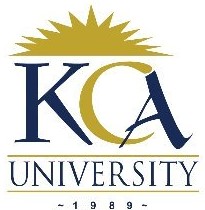
UNIVERSITY EXAMINATIONS: 2014/2015
ORDINARY EXAMINATION FOR THE BACHELOR OF SCIENCE
IN INFORMATION TECHNOLOGY
BIT 2308 HUMAN COMPUTER INTERACTION
DATE: APRIL, 2015 TIME: 2 HOURS
INSTRUCTIONS: Answer Question ONE and any other TWO
QUESTION ONE. (COMPULSORY)
(a) Discuss the following terms are they apply in HCI. (10 Marks)
i) Usability
ii) Affordance
iii) Visibility
iv) Metaphor
v) Cognitive Psychology
(b) Compare the constructivist and ecological theories of perception and give
examples of how each has influenced interface design. (4 Marks)
(c) Describe, with the aid of a diagram, the Human Information Processing model.
(4Marks)
(d) Explain between knowledge in the world and knowledge in the head. (2 Marks)
(e) (i) Differentiate “recognition rather than recall” as used in HCI (2 Marks)
(ii) Discuss areas in system design where ‘recognition’ is encouraged (2 Marks)
(iii) Discuss areas in system design where ‘recall’ is encouraged (2 Marks)
(f) Discuss any two metaphors used in the study of HCI and clearly show their
importance in system design. (4 Marks)
QUESTION TWO
(a) (i) What is distributed cognition? (2 Marks)
(ii) An electricity power plant was redesigned so that the old system consisting of a
single large display screen which could be seen by all of a team of three operators
was replaced by individual workstation screens for operators. This worked well
until there was a problem which resulted in dangerous gases being released. The
team of operators had great difficulty in finding the source of the problem and
deciding what to do.
Because they no longer have access to all the information, they have to spend
time explicitly co-ordinating their understanding of the situation by talking to
each other. Under the old system, the knowledge would be shared – one operator
would know what was happening with another’s area of the plant without explicit
communication. Although the team’s individual responsibilities would still have
been clearly divided, the knowledge of the system would be shared.
How could the new system of individual workstations be modified to make better use of
distributed cognition? (11 Marks)
(b) Explain any four facilities included in an interactive system that allows users to
recover from their mistakes (4 Marks)
(c) How does evaluation fit into a user-centered design lifecycle? (3 Marks)
QUESTION THREE
(a) What is the meaning of User-centered design? (2 Marks)
(b) Discuss audio and visual devices that are used in input and output devices.
(3
Marks)
(c) What is the aim of evaluation? Who should use evaluation? (3 Marks)
(d) Describe two techniques for evaluation, highlighting their key points and the
differences between them (12 Marks)
QUESTION FOUR
(a) Discuss any four interaction styles that are applicable in computing giving its
advantages and disadvantages. (12 Marks)
(b) Discuss KCA University website using Cognitive Task Analysis, GOMS
(8 Marks)
QUESTION FIVE
(a) Why is web page design different to designing for printed media? (6 Marks)
(b) What are design guidelines? (2 Marks)
(c) Nielsen produced some design guidelines for web sites. What were three issues he
covered? (4 Marks)
(d) What is meant by accessibility? (2 Marks)
(e) Give three examples of how web sites can aid accessibility. (6 Marks)
